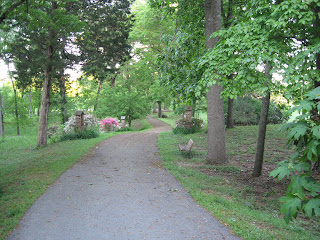The readings for this first Sunday of Lent are packed with rich imagery of water, rainbows, creatures of every kind, and desert wilderness. We once again travel the covenantal pilgrimage of salvation history. In the words of Patricia Sanchez, “through the story of Noah and the great flood, the authors of Genesis remind us that no one goes it alone in this world. God has chosen to be bound forever to us and to our world in a covenantal relationship
...This covenant supersedes all the differences that divide us and all the controversies that place us at odds with one another. Just as Noah and company were preserved in the ark from the flood waters, those who are baptized into Christ are saved through the waters of the sacrament. …The bow in the clouds stands as a witness to God’s ever deepening love and commitment to all. Among the ancient Near Eastern peoples, the rainbow was thought to be a divine weapon used by the gods to inflict harm on humankind. However, with the biblical narrative of Noah, the bow (undrawn) became a symbol of God’s unwillingness to harm covenantal partners. It bore silent, colorful witness to God’s “never again” pledge…” Through our own response to God’s covenantal relationship with us, “we are to echo God’s “never again” promise so that future generations might also know” this covenantal relationship.
In the Gospel of Mark, we join Jesus on his wilderness pilgrimage. Having just been baptized in the Jordan, he escapes to the desert for 40 days, a “fearsome place where wild beasts were a constant danger, [but] also the place where Israel and God sealed their relationship and where they had come to rely on God for their survival. Similarly reliant on God and strengthened by the Spirit and the ministrations of the angel messengers, Jesus not only survived the desert experience, he emerged victorious and eagerly intent upon beginning his mission. He would preach the gospel of God!” (Patricia Sanchez, from “Preaching Resources,” Celebration, February, 2012)
Jesus calls us to be serious about our own Lenten pilgrimage, to recall our baptismal commitment, our moments of monastic profession, our sufferings, our conversions, our joys. As the rite of “election” or “enrollment of names” for the catechumens who are to be admitted to the Sacraments of Christian Initiation at the Easter Vigil takes place tomorrow, we recall our own Baptismal celebration, the many catechumen celebrations we have witnessed, and all of our Sisters who have responded to Jesus’ call throughout the years to form new members into God’s covenantal relationship.
Each day of our daily monastic pilgrimage, with its desert and garden moments, its peaks and valleys, is a re-commitment to our Baptismal commitment- to our vow of stability, no matter what. The Lenten journey, indeed, our everyday journey, is definitely an adventure. Joyce Rupp, in her book, Walk in a Relaxed Manner, Life Lessons from the Camino, shares that “adventure depends on openness and an attitude of risk taking. Life can be boring and yawningly predictable or it can be surprisingly eventful and growth- filled. It depends on how we see it and what we allow it to be for us. The landscape of our daily routines may be the same but we are never the same inside. There is always something new waiting for us, if we will only open ourselves to it. What we consider to be everyday and ordinary can have freshness to it if we are willing to enter into it fully. Every day is an adventure daring us to be more fully alive.”
Our daily lives enrich our understanding of the liturgical readings from year to year. Something new is always waiting for us. With our listening hearts, we stand ready to embark on new adventures, inviting others, through our hospitality and ministry, to embark on the holy journey of life with us.
We can easily see the readings for tomorrow as the Paschal Journey. The water images of the flood might make us think of the virulent budding of spring gifts to come, the desert sands conjure up times of aridity and tribulation, the rainbow assures us there is hope, and Jesus’ presence in the desert reflects that in God all things are possible if we look to Him as the Way, the Truth, and the Life.
The scallop shell design, worn as a badge by pilgrims to Compostela, symbolizes the many European starting points from which medieval pilgrims began their journey, all drawn to a single point at the base of the shell, Santiago de Compostela. So perhaps we should keep this scallop shell in mind as our symbol to carry along on our Lenten journey, where each week of Lent is drawn to a single point at the base of the shell, the arrival at our Easter destination.
As we think of pilgrimage, the following quote from James Healy is appropriate:
"Whether we gaze with longing into the garden or with fear and trembling into the desert, of this we can be sure---God walked there first! And when we who have sinned and despoiled the garden are challenged now to face the desert, we do not face it alone; Jesus has gone there before us to struggle with every demon that has ever plagued a human heart. Face the desert we must if we would reach the garden, but Jesus has gone there before us."
(from A Lent Resource Book, The Forty Days, Book One, pg.68,
Liturgy Training Publications, 1990)





No comments:
Post a Comment